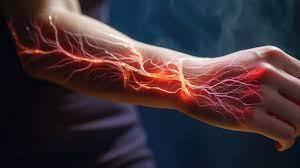Understanding Papular Eczema
What is Papular Eczema?
Characterized by the development of tiny, irritating bubbles or papules on the skin, papular eczema—also known as papular dermatitis or subacute prurigo—is Usually less than one centimeter in size, these papules are red, swollen, and frequently vary in color.
Usually affecting the arms, legs, or trunk, the illness can be brought on by several elements including allergies, irritants, and stress. Treatment sometimes consists in avoiding recognized irritants, moistening the skin, and applying topical drugs to lower inflammation and itching.
Symptoms of Papular Eczema
Characterized by the following symptoms, papular eczema—also known as papular dermatitis—is a form of eczema.
The main characteristic of small, itchy bumps is a rash of tiny, red or brownish blules called papules. Usually itchy, these lumps can show up anywhere on the body.
Inflammation: The afflicted skin could swell and be red.
Dryness: The rash may dry and flaking the skin.
Crusting: Sometimes the pimples could ooze and develop crusts.
Distribution: Common regions include the arms, legs, and torso even if it can happen anywhere.
Factors and Triggers
Small, irritating pimples or papules on the skin define papular eczema, sometimes called papular dermatitis or subacute prurigo. Effective management of the illness depends on an awareness of its causes and triggers.
Factors:
Genetics: Susceptibility can be raised by an eczema or other allergy family history.
Papular eczema can develop in part from an excessive immune response.
Often brought on by dryness or irritation, damage to the skin barrier can cause eczema.
Environmental Factors: The illness may get worse in response to irritants including pesticides, detergents, or strong soaps.
Triggers:
Flare-ups can be brought on by allergens including pollen, dust mites, pet dander, or some foods.
Contact irritating materials include wool, synthetic fibers, or some personal care items.
Weather: Low humidity or extreme temperatures could aggravate conditions.
Stress: Both emotional and physical stress could aggravate eczema symptoms.
Viral or bacterial illnesses can aggravate or start eczema.
Managing papular eczema usually means avoiding recognized allergens, using suitable skincare products, and occasionally utilizing drugs to reduce inflammation and itching.
Daily Skincare Routine
Gentle Cleansing
Using a gentle, fragrance-free cleanser is essential for those with papular eczema. Harsh soaps and hot water can strip the skin of its natural oils, exacerbating dryness and irritation. Opt for lukewarm water and a mild, hypoallergenic soap to cleanse your skin.
Moisturizing Techniques
Keeping your skin well-moisturized is a cornerstone of managing papular eczema. Apply a thick, emollient-rich moisturizer immediately after bathing to lock in moisture. Ingredients like ceramides and hyaluronic acid can help repair the skin barrier and retain hydration.
Topical Treatments
Topical treatments, including corticosteroids and calcineurin inhibitors, can reduce inflammation and itching. It’s essential to follow your dermatologist’s recommendations for the use of these treatments to avoid potential side effects.
Diet and Nutrition
Anti-inflammatory Foods
Incorporating anti-inflammatory foods into your diet can help manage the symptoms of papular eczema. Foods rich in omega-3 fatty acids, such as salmon, flaxseeds, and walnuts, can reduce inflammation. Additionally, fruits and vegetables high in antioxidants can support overall skin health.
Foods to Avoid
Certain foods can trigger eczema flare-ups in some individuals. Common culprits include dairy, eggs, nuts, and gluten. Keeping a food diary can help identify any dietary triggers and allow you to make necessary adjustments.
Hydration
Staying well-hydrated is crucial for maintaining healthy skin. Drinking plenty of water throughout the day helps keep your skin hydrated from the inside out, reducing dryness and itching associated with papular eczema.
Stress Management
Mindfulness Practices
Stress is a known trigger for eczema flare-ups. Incorporating mindfulness practices, such as meditation and deep breathing exercises, can help manage stress levels. Setting aside a few minutes each day for relaxation can make a significant difference.
Exercise and Relaxation
Regular exercise can reduce stress and improve overall well-being, but it’s important to choose activities that don’t irritate your skin. Low-impact exercises like yoga and swimming are great options. Always shower and moisturize after sweating to prevent irritation.
Environmental Factors
Allergen Control
Managing your environment to reduce exposure to allergens is vital. Dust mites, pet dander, and pollen can all trigger eczema. Use air purifiers, keep your home clean, and consider hypoallergenic bedding to minimize allergens.
Climate Considerations
Extreme temperatures and humidity levels can worsen papular eczema. In cold weather, use a humidifier to add moisture to the air. In hot, humid conditions, stay cool and dry to prevent sweating, which can irritate the skin.
Clothing and Fabrics
Choosing the Right Fabrics
Wearing the right fabrics can make a big difference in managing papular eczema. Opt for soft, breathable materials like cotton and avoid rough, scratchy fabrics such as wool. Loose-fitting clothes can also help reduce irritation.
Laundry Tips
Use mild, fragrance-free detergents to wash your clothes. Harsh chemicals and fragrances can irritate sensitive skin. Rinse your clothes thoroughly to remove any detergent residue.
Sleep Hygiene
Bedtime Routine
Establishing a consistent bedtime routine can improve the quality of your sleep and help manage eczema symptoms. Take a warm bath, apply moisturizer, and practice relaxation techniques before bed.
Bedroom Environment
Creating a comfortable sleeping environment is key. Keep your bedroom cool, use soft bedding, and minimize potential irritants like dust and pet dander. Investing in a mattress cover can also help reduce allergen exposure.
Professional Guidance
Dermatologist Visits
Regular visits to a dermatologist are essential for managing papular eczema. They can provide personalized treatment plans, prescribe medications, and offer advice on lifestyle changes to help keep your symptoms under control.
Allergist Consultations
If you suspect allergies are triggering your eczema, consulting an allergist can be beneficial. They can perform tests to identify specific allergens and recommend strategies to avoid them.
Conclusion
Managing papular eczema involves a multifaceted approach that includes daily skincare, dietary adjustments, stress management, and environmental control. By incorporating these lifestyle changes, you can effectively reduce the frequency and severity of flare-ups, improving your quality of life. Always consult with healthcare professionals to tailor these strategies to your specific needs.
FAQs
What is the best moisturizer for papular eczema?
Look for thick, emollient-rich moisturizers with ingredients like ceramides and hyaluronic acid.
Can diet really affect eczema?
Yes, certain foods can trigger or alleviate symptoms. Anti-inflammatory foods are beneficial, while common allergens should be avoided.
How often should I see a dermatologist for papular eczema?
Regular visits, at least twice a year or more if symptoms are severe, are recommended.
Is exercise good for managing eczema?
Yes, regular exercise can reduce stress, but choose activities that are gentle on the skin and avoid sweating.
What should I avoid to prevent eczema flare-ups?
Avoid harsh soaps, extreme temperatures, allergens, and known dietary triggers to manage flare-ups effectively.





[…] completing the treatment, it’s important to maintain good oral hygiene and continue with regular dental check-ups. Your dentist will provide guidance on how to care for […]